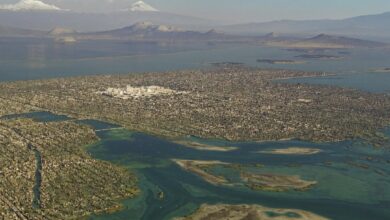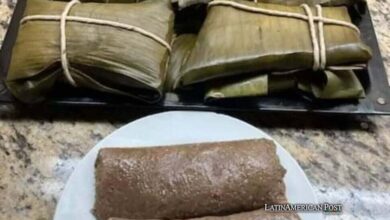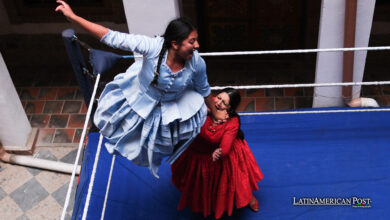Maya Mam Indigenous Ritual Seeks Peace Amid Violence in Chiapas, Mexico

On Wednesday, the Maya Mam indigenous community in southern Mexico conducted the ‘New Fire’ ritual, seeking ancestral intervention to end the escalating violence and insecurity in Chiapas. This sacred ceremony, led by Diego Toj of the Maya Mam Indigenous Council, aimed to eradicate negative energies and bring peace to regions plagued by organized crime and unrest.
A Sacred Plea for Peace in Chiapas
In the lush landscapes of Mexico’s southern frontier, an ancient ritual unfolds, echoing the timeless plea of a people yearning for peace. The Maya Mam, one of the indigenous communities in the region, gathered this Wednesday to perform the ‘Fuego Nuevo’ or ‘New Fire’ ceremony, a sacred ritual deep in their cultural heritage. Amidst the natural splendor of Chiapas, a state beset by violence and insecurity, this ceremony stands as a beacon of hope and a call for harmony.
Led by Diego Toj, a representative of the Maya Mam Indigenous Council, the ceremony was more than a cultural observance; it was an urgent appeal for peace. In the face of escalating violence that has led to the displacement of entire communities, the Maya Mam turned to their ancestral traditions, seeking intervention from their forebears through this revered ritual.
The ‘New Fire’ ceremony profoundly expresses the Maya Mam’s spiritual connection with their ancestors. Conducted at the emblematic Chocolate Park, a site deeply entwined with the Maya Mam culture, the ritual symbolizes a renewal of energies and a farewell to past adversities. It’s a time when the community gathers to reflect, rejuvenate, and prepare for the challenges ahead.
Praying for Peace Amidst Violence
As Toj eloquently explained, the purpose of the ceremony is to pray to the ancestors for peace and harmony, aiming to dispel the fears and violence that have gripped the southern border due to the presence of organized crime. In a concerted effort, various Maya altars across the region were synchronized to eradicate the negative energies perceived in their surroundings, with the ultimate goal of reducing violence, terror, and the displacement of indigenous communities.
The turmoil has disproportionately affected the Maya Mam people, particularly in areas like Comitán, Chicomuselo, and other nearby communities along the Guatemala border. Toj’s words resonate with a sense of urgency, highlighting the desperate need for peace in these regions, some of the poorest in the country.
This cry for help has not gone unnoticed. Over the past year, civil and indigenous organizations have sounded alarms over a climate akin to a ‘civil war’ in Chiapas, triggered by conflicts involving organized crime. The situation has led to homicides, disappearances, and forced displacements, especially in communities aligned with the Zapatista Army of National Liberation (EZLN).
Spirituality and Environmental Connection
The ritual, a blend of spirituality and environmental connection, offers more than just solace; it serves as a powerful reminder of the ancestral wisdom and resilience of the Maya Mam people. Participants like Hayde León Sánchez, a resident of Estación Huehuetán, find profound meaning in the ceremony. Sánchez explained that it’s not only a moment to relax and connect with the environment and the Maya elders but also an occasion to ask for prosperity, health, abundance, work, and safe travels.
This sacred ceremony is a poignant testament to the enduring strength of indigenous cultures in the face of modern-day crises. It underscores the vital role of traditional practices and beliefs in providing comfort and guidance to communities under siege.
However, the Maya Mam’s appeal extends beyond the spiritual realm. Toj has made an urgent call for the Mexican government to pay special attention to the ‘red zones’—the areas most affected by violence in the region. This plea underscores the need for a concerted effort by authorities to address the root causes of the conflict and provide tangible support to the beleaguered communities.
The situation in Chiapas is a complex tapestry of socio-economic and political challenges. Despite its rich cultural heritage and natural beauty, the state remains one of Mexico’s poorest. The prevalence of organized crime, coupled with a lack of economic opportunities, has created a volatile environment where indigenous communities like the Maya Mam are particularly vulnerable.
Therefore, the Maya Mam’s ‘New Fire’ ceremony is not just a call for spiritual intervention. It is a stark reminder of the ongoing struggles faced by indigenous communities in Mexico and their resilience in the face of adversity. It highlights the need for a holistic approach to conflict resolution that respects and incorporates indigenous knowledge and practices.
Growing Call for Collaborative Solutions
In response to the crisis, there is a growing call for collaborative solutions that involve all stakeholders, including indigenous groups, government agencies, civil society, and international organizations. Such a multi-faceted approach could help address the underlying issues of poverty, inequality, and lack of access to essential services, which fuel the cycle of violence.
The ‘New Fire’ ceremony also draws attention to the broader issue of indigenous rights in Mexico. Like many other indigenous communities, the Maya Mam have long fought for recognition and protection of their cultural heritage, land rights, and autonomy. Their struggle symbolizes the giant global fight for indigenous rights— respect, dignity, and the preservation of ancestral wisdom in a rapidly changing world.
As the Maya Mam continue their sacred rituals and advocacy, their message resonates far beyond the borders of Chiapas. It’s a message of hope, resilience, and the unyielding spirit of a people firmly rooted in their ancestral traditions yet facing modern challenges with courage and dignity.
Also read: Ecuador’s Unnamed Ancient City: A Pre-Hispanic Marvel Hidden in the Amazon
In the end, the ‘New Fire’ ceremony is more than just an indigenous ritual; it’s a clarion call for peace, a plea for understanding, and a vivid illustration of the enduring power of cultural traditions in navigating the complexities of contemporary life. The Maya Mam’s quest for harmony amidst chaos is not only their battle but a shared human endeavor, echoing across time and space, reminding us of the fundamental values of peace, unity, and respect for all life.





